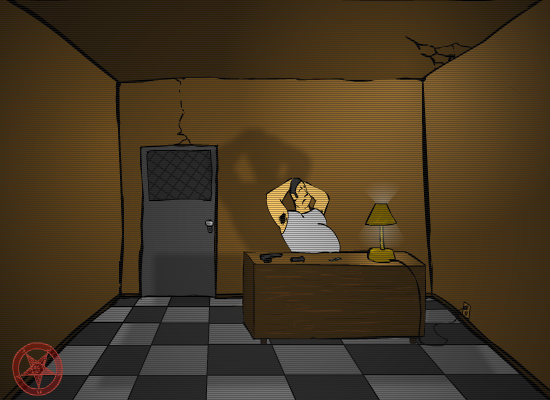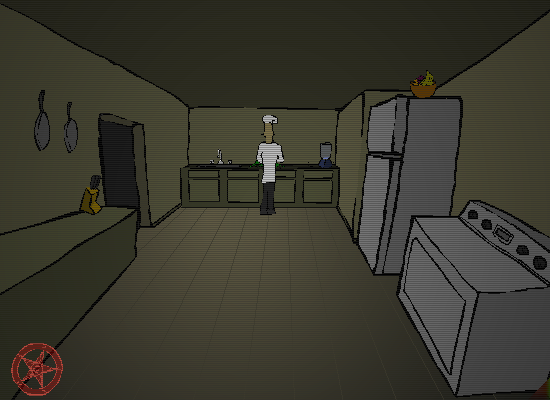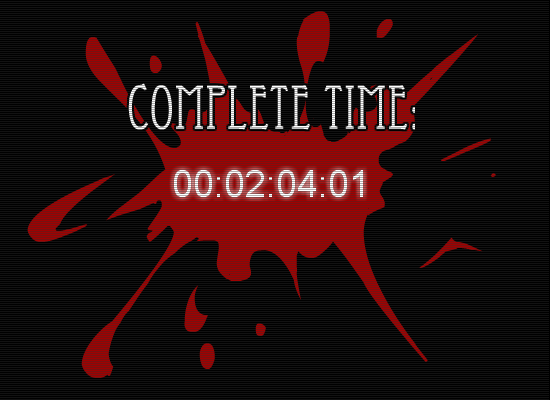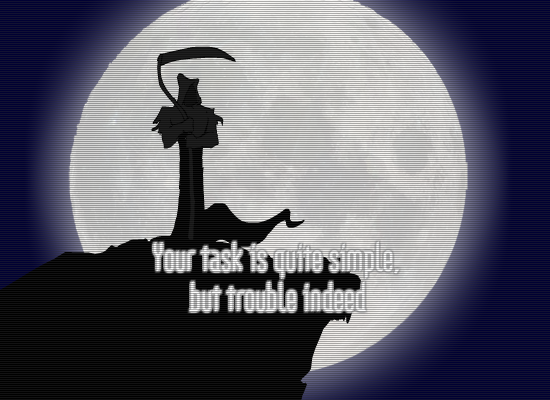Retro Replay Review
Gameplay
Orchestrated Death offers a distinctive twist on the classic point-and-click formula by casting you in the role of Death itself. Rather than engaging in combat or racing against the clock, you methodically inspect environments and piece together elaborate sequences of events to engineer “accidents” that dispatch each victim. The lack of a health system or time limit transforms the experience into a leisurely puzzle playground, allowing you to experiment freely until you find the precise trigger chain that culminates in a perfectly executed demise.
Each of the three chapters introduces a fresh victim scenario, complete with a unique setting and a varied arsenal of interactive objects. Early puzzles are deceptively straightforward—perhaps rigging a chandelier to drop or slipping a banana peel underfoot—but subsequent chapters weave more layers, requiring you to combine multiple devices, props, and environmental hazards. This escalating complexity keeps the gameplay engaging, as you must not only locate the necessary items but also deduce the correct chronological order to activate them.
The user interface is intuitive: a simple cursor changes appearance when hovering over usable items, and a contextual menu lists discovered inventory objects. Drag-and-drop mechanics feel responsive, and subtle audio cues confirm successful connections. There’s no explicit hint system, yet the absence of a timer removes frustration and encourages lateral thinking. If you reach an impasse, you can retrace your steps, experiment with different sequences, or start a chapter over without penalty.
Graphics
Visually, Orchestrated Death leans into a stylized, painterly aesthetic with a subdued color palette that complements its darkly comedic tone. Each chapter’s backdrop—from a cluttered study to a sunlit veranda—boasts hand-drawn details that reward careful observation. Shadows and lighting are used not only for atmosphere but also as a subtle guide, drawing your eye toward interactive hotspots without the need for intrusive highlighting.
Character models are rendered with cartoonish exaggeration, emphasizing expressive flourishes when victims react to impending doom. Animations play smoothly, whether it’s the slow creak of a platform about to give way or the sudden snap of a rope. Transition sequences, such as the slow zoom on a rigged trap just before activation, heighten the sense of anticipation and give each fatal tableau a theatrical flair.
Performance remains rock-solid even on mid-range hardware, thanks to the game’s modest resource demands. Loading times are minimal, and the point-and-click viewports scale well to different resolutions. While there are no 3D effects or high-fidelity textures, the cohesive art direction and clean UI contribute to an overall presentation that feels polished and purpose-built for this kind of puzzle-driven murder simulation.
Story
On the surface, Orchestrated Death revolves around the simple premise of eliminating targets in clever ways. Yet beneath that premise lies a tongue-in-cheek narrative about the inevitable march of fate. You inhabit the persona of Death, but rather than a faceless reaper, you’re portrayed as a meticulous artist, crafting scenes of fatal irony. Brief interludes between chapters hint at a cosmic bureaucracy and even allow for sly commentary on mortality’s absurdity.
Though there’s no deep character development for the victims—after all, they’re more puzzle set pieces than protagonists—you do glean snippets of their personalities through environmental storytelling. A discarded diary page, a half-empty wine glass, or a cryptic newspaper clipping offers context and black humor. These narrative crumbs don’t alter puzzle structure but enrich the world-building and make each assassination feel narrative-driven rather than purely mechanical.
The pacing of the story is deliberate, unfolding in three distinct movements much like a macabre symphony. Each chapter bookends with a brief cutscene or intertitle that transitions you from one stage of Death’s commission to the next. While the overarching arc is not meant to be Shakespearean drama, it effectively ties the chapters together and underscores the game’s playful yet morbid theme.
Overall Experience
Orchestrated Death shines as a clever, stress-free puzzle game that appeals to fans of point-and-click adventures and dark humor alike. Its three-chapter structure keeps play sessions concise—perfect for short bursts of gameplay—while the freedom to experiment and the absence of punitive mechanics foster a relaxed, exploratory mindset. If you enjoy tinkering with cause-and-effect scenarios, you’ll find yourself delighting in each newly discovered accident setup.
Replayability is moderate; once you’ve uncovered the solution sequences, you might revisit chapters to seek out alternate triggers or simply to admire the intricate setups you’ve constructed. Though there are no hidden endings or branching paths, the game’s charm lies in the precision of its puzzles and the satisfaction of watching your carefully laid plans unfold to comedic effect.
Overall, Orchestrated Death delivers a short but memorable journey through the mechanics of fatal artistry. It distinguishes itself with a unique premise, polished presentation, and a puzzle-driven design that shines in the absence of timers or health bars. For players seeking a bite-sized, creatively charged point-and-click experience dipped in macabre wit, this title is a compelling choice—and one that invites you to embrace the role of a most unconventional puppeteer.
 Retro Replay Retro Replay gaming reviews, news, emulation, geek stuff and more!
Retro Replay Retro Replay gaming reviews, news, emulation, geek stuff and more!









Reviews
There are no reviews yet.